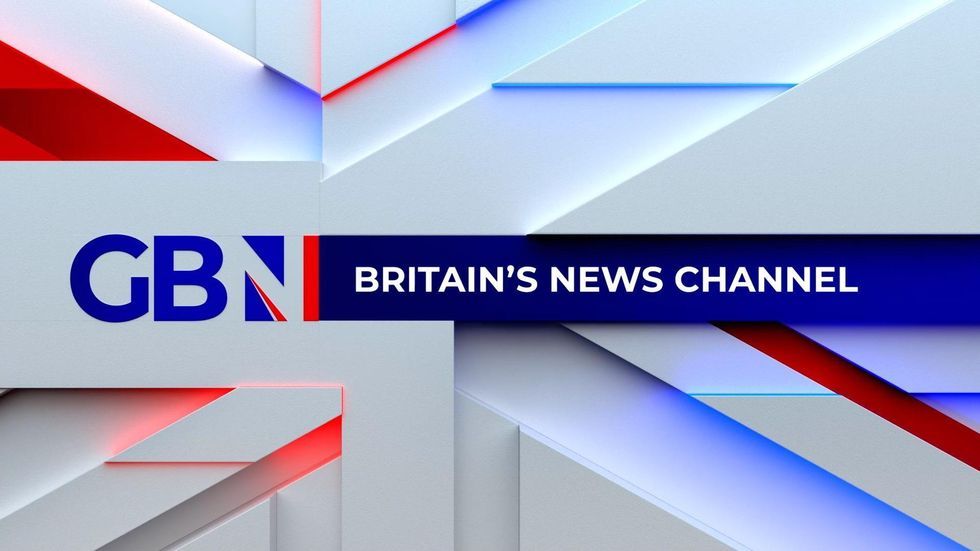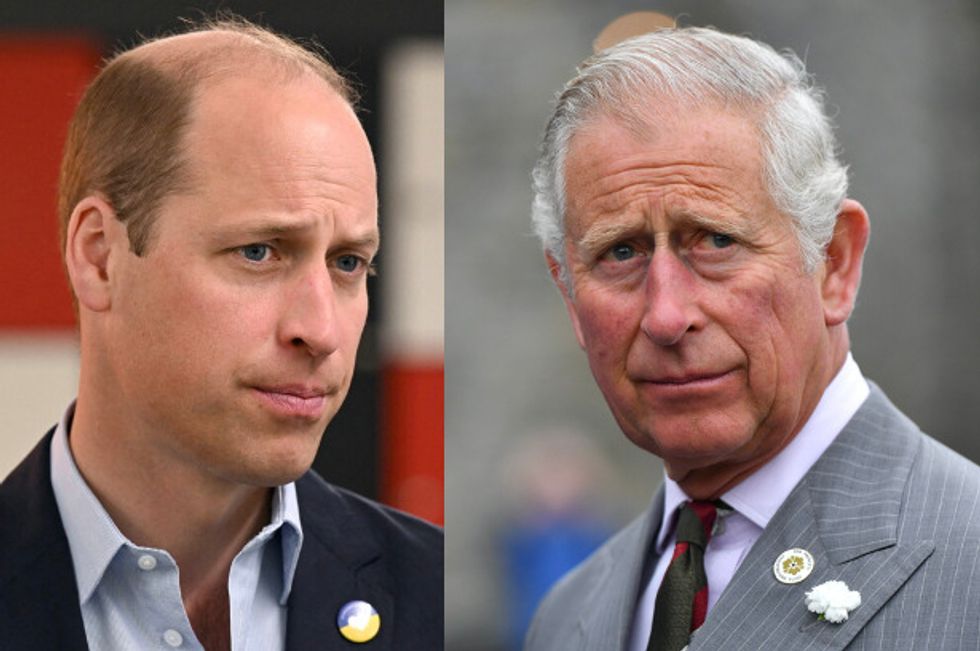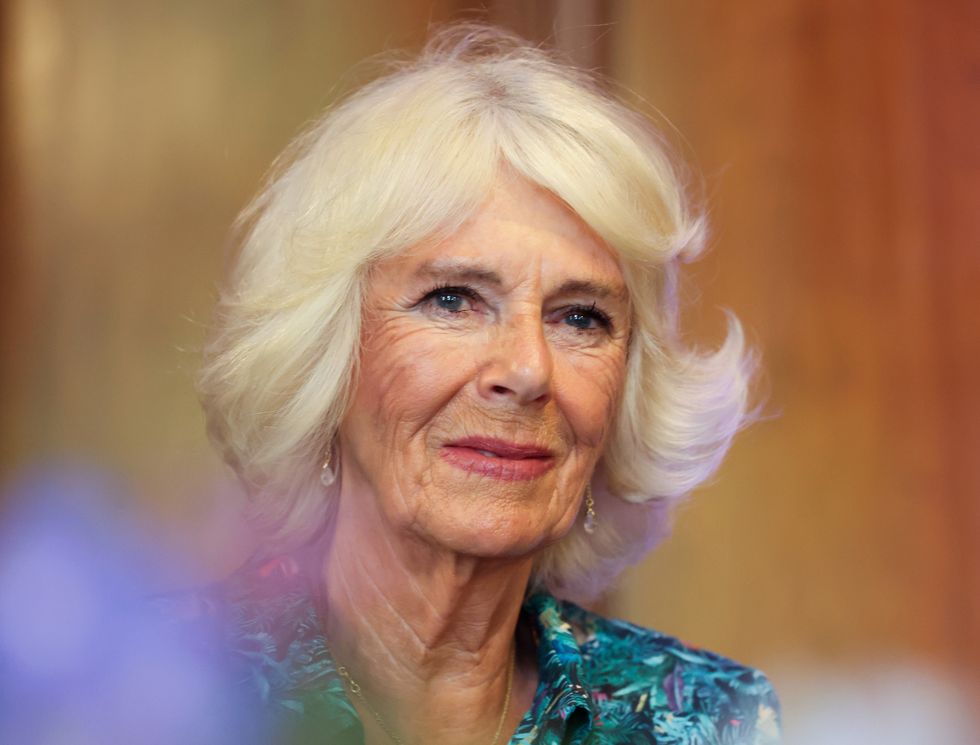Don't Miss
Most Read
Trending on GB News
Charles, who was the Prince of Wales, is now King of the United Kingdom of Great Britain and Northern Ireland.
He is also King of other Commonwealth realms.
His style is His Majesty rather than His Royal Highness.
Charles is also Defender of the Faith and Supreme Governor of the Church of England
The monarch has been known by the title Defender of the Faith ever since it was bestowed on Henry VIII as “Fidei Defensor” by the Pope in 1521 for his early support for Roman Catholicism.
William and Charles
PA
When Henry VIII broke from the Catholic Church in 1534 he was named Supreme Head of the Church of England. This was repealed by Mary I but reinstated during the reign of Elizabeth I, who was proclaimed Supreme Governor of the Church of England.
In 1994, Charles, a passionate advocate of religious tolerance, caused controversy when he told of his desire to become “Defender of Faith” rather than “Defender of the Faith” when king.
But he later indicated in 2015 that he would still be sworn in as Defender of the (Anglican) Faith when he became king.
“It always seems to me that while at the same time being Defender of the Faith you can also be protector of faiths,” Charles said.
According to the Privy Council website, the new monarch will proclaim an oath at the Accession Council which will begin: “I, (his name as King) by the Grace of God of the United Kingdom of Great Britain and Northern Ireland and of my other Realms and Territories King, Defender of the Faith….”
Camilla is, as the wife of the King, the Queen Consort.
Her style is now Her Majesty rather than Her Royal Highness.
She is a Queen Consort, as was the Queen Mother, rather than a Queen Regnant who rules in her own right, such as Elizabeth II.
Ahead of Charles and Camilla’s wedding in 2005, royal aides said Camilla did not want to be Queen and “intended”, when the time came, to be known as Princess Consort instead – a title which has never been used before in British history.
But just a few weeks before their nuptials, the government confirmed that legislation would be needed for Camilla not to become Queen automatically on Charles’s accession, no matter what she wished to style herself.
Elizabeth II ended years of controversy in February 2022 when she publicly endorsed her daughter in law to be known as Queen Consort in her Platinum Jubilee message to the nation.
The Duke of Cambridge, as heir to the throne, is now the Duke of Cornwall and Cambridge.
Camilla is, as the wife of the King, the Queen
Chris Jackson
As Charles’s eldest son, he has inherited the title the Duke of Cornwall.
William’s great-great-grandfather, George V, combined the Cornwall title with his existing dukedom in 1901.
He became the Duke of Cornwall and York, when his father became Edward VII – but only remained so for nine months after which he was created, and was known as, the Prince of Wales, on the orders of the king.
As the 25th Duke of Cornwall, William is entitled to the multimillion-pound annual net surplus from the Duchy of Cornwall landed estate. The income will cover the cost of both his public and private life.
William will, at some stage, be given the title the Prince of Wales – which is traditionally used for the male heir to the throne.
But this not automatic and William needs to be created so by his father. The same stands for the Earl of Chester.
William has also inherited the Scottish titles the Duke of Rothesay, Earl of Carrick, Baron of Renfrew, Lord of the Isles and Prince and Great Steward of Scotland.
Duke of Rothesay – This title of the Scottish peerage was first conferred by Robert III, King of Scots, on his son David in 1398. An act of the Scottish Parliament in 1469 confirmed its restriction to the heir apparent to the throne of Scotland.
Since the 1603 Union of the Crowns, the title has descended alongside the Dukedom of Cornwall.
Earl of Carrick and Baron of Renfrew – Other titles of the Scottish peerage inherited by the heir to the throne under the 1469 Act.
Lord of The Isles – This ancient title, held by those who ruled the Western Isles as vassals of the King of Scotland, was annexed to the Crown by James V of Scotland in 1540, to be passed to his heirs.
Prince and Great Steward of Scotland – The hereditary office of Great (or High) Steward dates from the 12th century. The 1469 Act confirmed that the title should go to “the first-born prince of the King of Scots for ever”.
The Duchess of Cambridge is now the Duchess of Cornwall and Cambridge.
Until the Queen’s death, Camilla was the Duchess of Cornwall.
When William becomes the Prince of Wales as expected, Kate will become the Princess of Wales – last used by William’s mother, Diana, Princess of Wales, when she was married to Charles.
Camilla was also technically the Princess of Wales but never used the title because of its association with Diana.
Kate will also hold the title the Countess of Chester, if William becomes the Earl of Chester.
She is also now the Duchess of Rothesay in Scotland – also previously Camilla’s title.
William and Kate’s children have become Prince George of Cornwall and Cambridge, Princess Charlotte of Cornwall and Cambridge, and Prince Louis of Cornwall and Cambridge.
They will eventually become “of Wales” when William is the Prince of Wales.
The Duke and Duchess of Sussex’s son Archie Mountbatten-Windsor is now technically a prince due to rules set out by King George V in 1917.
When Archie was born he was too far down the line of succession for such a title according to George V’s restrictions, but now, as the son of a son of a sovereign, he can be an HRH and a prince.
Archie was allowed to become Earl of Dumbarton – one of the duke’s subsidiary titles – when he was born, or could have been known as Lord Archie Mountbatten-Windsor, but Buckingham Palace said his parents had decided he should be plain Master Archie instead.
In the Sussexes’ bombshell Oprah interview, Meghan, however, claimed Archie was not made a prince because of his race – even though George V’s rules meant he was not entitled to be one.
In 2021, it was suggested Charles – in a bid to limit the number of key royals – intended, when he became king, to prevent Archie becoming a prince.
To do so, he will have to issue a Letters Patent amending Archie’s right to be a prince.
Until that potentially happens, Archie remains a prince, whether his parents choose to use the title or not.
If it does not happen, Archie continues to technically be HRH Prince Archie of Sussex.
The Duke and Duchess of Sussex’s titles will not change. The couple have stopped using their HRH styles, but they still retain them.
Archie’s younger sister Lilibet “Lili” Mountbatten-Windsor is now technically a princess.
If she uses the title, she will be HRH Princess Lili of Sussex.
Like Archie, Charles would have to issue a Letters Patent to remove this.












